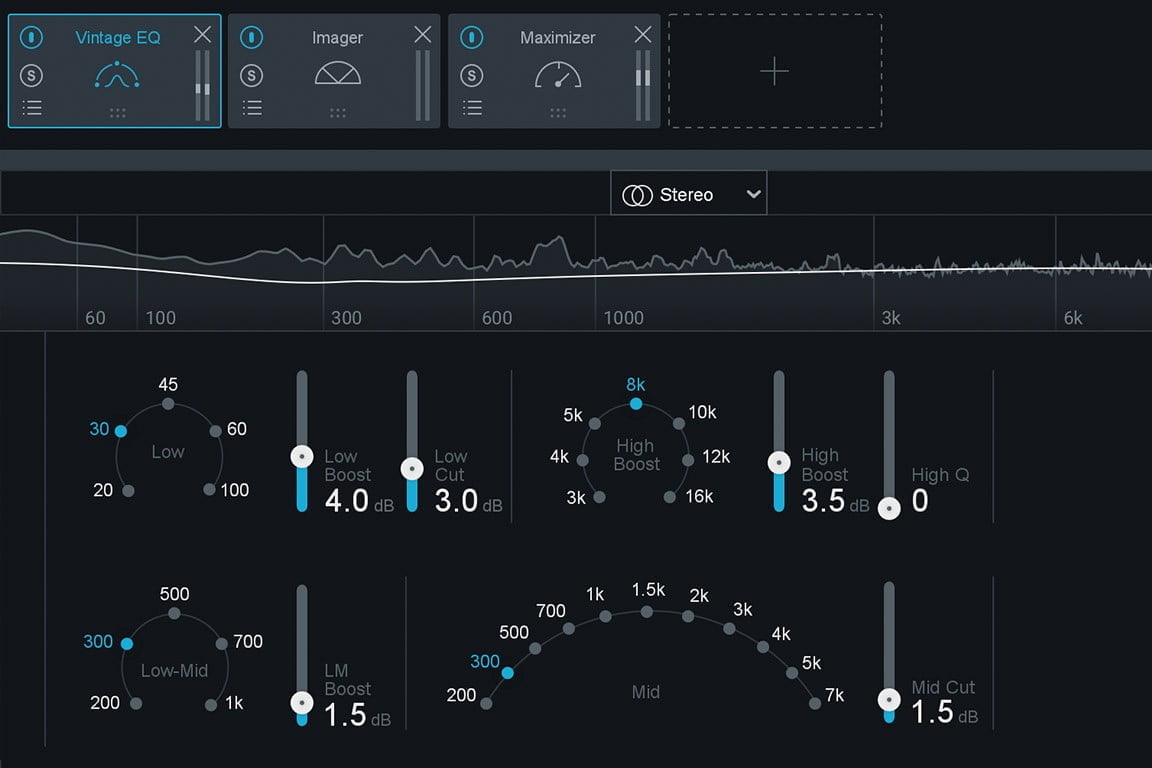

Both of these take longer to work, with the 'C' algorithm taking around 15 minutes to process a one–minute file. Next I tried the Audiosuite version to see what improvements I could achieve with the off–line algorithms. Lower settings reduced that, but at the risk of introducing artifacts. I found that if the Smoothing control was set too high, the hiss would be modulated up and down with the audio. In Simple mode it was then a matter of adjusting the Reduction and Smoothing controls for the best sound. I selected a section of the file with just noise, hit the 'Train' button, and Denoiser analysed the sample. I first tried the Denoiser as an RTAS plug–in on my 'hiss' test file.
#IZOTOPE VS SOUNDSOAP MANUAL#
I would recommend some serious time is spent with the manual to work your way through the rest of the Advanced section, if you choose to go for this version. Both these parameters have Reduction controls to go with them, and this just the start of the Advanced section. There are now two Threshold controls, one for tonal sounds and the other for broadband sounds. The Advanced version has a raft of additional controls across two pages. One works in real time, one can work in real time on some systems, and the third (C) is available only for off–line processing, but offers the highest quality of processing.Ī wealth of additional parameters is available in the Advanced version of Denoiser.The basic RX version offers two controls: Noise Reduction adjusts the threshold and so determines the amount of noise reduction, and Smoothing helps reduce the artifacts created by denoising. RX and RX Advanced offer three different algorithms. The broadband Denoiser module offers three quality settings, but the highest can't be used in real time.The Denoiser module follows the traditional learn–and–process model used by most denoising plug–ins.

The Advanced version offers advanced manual declicking and 'multi–resolution' declipping, 'multi–resolution' spectral repair modes, additional denoiser parameters and, in the stand–alone version only, a dithering control panel and a resampling control panel. The suite comes in two versions: RX and RX Advanced. For testing purposes, I used the same sample files that I used in my restoration shootouts from August 2005 ( and November 2007 ( All tests are for one pass using one plug–in, taken to the point where artifacts just become audible.
#IZOTOPE VS SOUNDSOAP PRO#
In Pro Tools, which I used for this review, you can set up the plug–ins in RTAS mode, copy the settings across to the Audiosuite version and render the files, so taking the load off the system and making the Session playable on other systems without the plug–in. Supported formats include RTAS/Audiosuite, VST, MAS, Audio Units and Direct X, so there won't be many host applications unable to open their doors to this restoration suite.
#IZOTOPE VS SOUNDSOAP UPDATE#
At launch it was a stand–alone product only, but iZotope have since released an update that brings these modules into digital audio workstations as plug–ins. RX contains five modules: Declipper, Declicker, Hum Removal, Denoiser and Spectral Repair. As well as the usual noise–reduction algorithms, RX also includes clip reduction and an advanced 'spectral repair' module.įollowing on from the likes of Waves, BIAS, Sonic Solutions and Wave Arts, iZotope have released a comprehensive suite of restoration software. RX Elements, meanwhile, offers more in the way of fine-tuning the various thresholds and gains.IZotope are the latest developers to release a suite of tools for tackling problem audio. In SoundSoap, this is literally an on/off switch for the effect. Further, within the interface of each tool, Accusonous’s De-Clipper and SoundSoap offer rather binary options. Overall, we found the RX Elements tool to be the most effective by a large margin. We ran each tool over a couple samples of clipped audio in Final Cut Pro X, the results of which you can find here: RX Elements ($129) by iZotope is a basic suite of audio cleaning tools, featuring de-click, de-clip, de-hum and de-noise. SoundSoap 5 ($150) by Antares is a suite of audio cleaning tools that includes denoise, declicking, and hum removal in addition to the declipper feature. With the release of a new audio plugin on FX Factory called De-Clipper, we decided to compare our previous audio cleanup tools and see what came out on top.ĭe-Clipper ($59) by Accusonous is billed as “the world’s first entirely automatic De-Clipper.”


 0 kommentar(er)
0 kommentar(er)
